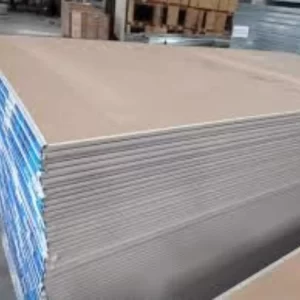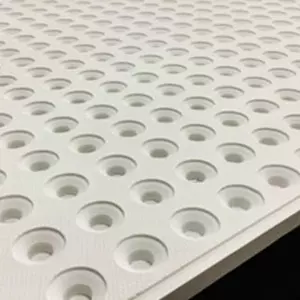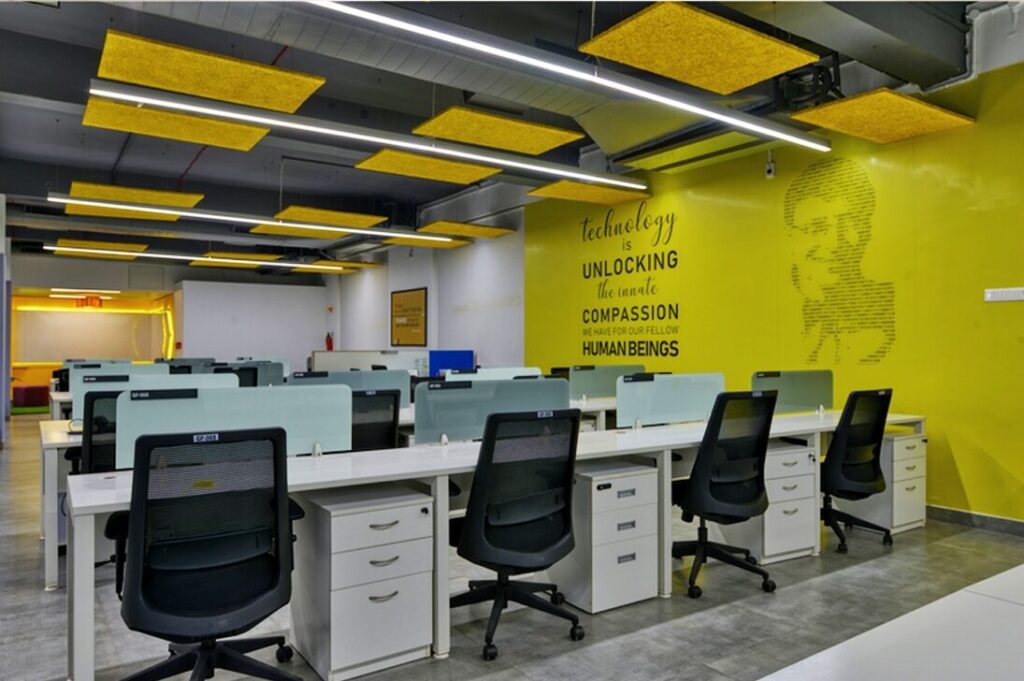The Failures of Raised Access Flooring Projects
Introduction
The Failures of Raised Access Flooring Projects systems provide a flexible and efficient solution for managing utilities and services in modern buildings. They elevate the floor level, creating a void that can accommodate electrical wiring, data cables, HVAC systems, and other infrastructure components. However, despite their advantages, raised access flooring projects can encounter various failures that may undermine their effectiveness and long-term viability.

2. Insufficient Planning and Design
One of the primary reasons for the failure of raised access flooring projects is the lack of thorough planning and design. When the planning phase is rushed or overlooked, it can lead to inadequate space allocation, incorrect load-bearing calculations, or incompatible flooring specifications. Insufficient planning often results in costly modifications or retrofitting efforts down the line.
3. Inadequate Structural Support
Proper structural support is crucial for the success of raised access flooring installations. Inadequate support can lead to floor panels sagging or buckling under load, compromising the integrity and functionality of the system. It is essential to consider the weight-bearing capacity of the structural framework and ensure it aligns with the specific requirements of the raised access flooring.
4. Poor Installation and Workmanship
The quality of installation and workmanship plays a significant role in the overall success of a raised access flooring project. Improper installation can result in misalignment, loose panels, or uneven flooring surfaces, jeopardizing the system’s functionality and aesthetic appeal. Engaging experienced professionals with expertise in raised access flooring installation is crucial to avoid such issues.
5. Subpar Cable Management
Effective cable management is a critical aspect of raised access flooring projects, especially in modern office environments where connectivity is paramount. Insufficient planning for cable routing, inadequate provision of cable trays, or improper segregation of power and data cables can lead to tangled wires, signal interference, and difficulties in maintenance and upgrades.
6. Lack of Consideration for Future Needs
A common failure in raised access flooring projects is the failure to anticipate future needs. Businesses evolve, technologies advance, and infrastructure requirements change over time. If the initial design does not consider future expansion, scalability, or adaptability, it may result in costly retrofitting or limitations on system upgrades and modifications.
7. Limited Accessibility and Maintenance Challenges
While raised access flooring enhances accessibility to utilities and services, improper planning and design can lead to limited accessibility and maintenance challenges. Inadequate provisions for access points, restricted maneuverability, or insufficient clearance for equipment maintenance can impede the ease of system maintenance, resulting in increased downtime and operational disruptions.
8. Ineffective Acoustic Performance
Noise reduction is crucial in modern workspaces, and raised access flooring systems can contribute to acoustic insulation. However, if not properly designed and implemented, the system may fail to provide the desired acoustic performance. Inadequate soundproofing measures, poorly chosen flooring materials, or gaps and air leaks in the system can compromise the acoustic comfort within the building.
9. Cost Overruns and Budget Constraints
Unforeseen cost overruns and budget constraints are common failures in raised access flooring projects. Poor cost estimation, inaccurate assessments of material requirements, or unexpected changes during construction can lead to financial strain. It is essential to have a well-defined budget, conduct comprehensive cost analysis, and account for contingencies to avoid project delays and financial burdens.
10. Environmental Concerns
Sustainability and environmental considerations are increasingly important in modern construction projects. However, raised access flooring systems can inadvertently contribute to environmental concerns if not implemented thoughtfully. Issues such as poor energy efficiency, improper waste management, or the use of non-recyclable materials can undermine the project’s eco-friendliness and long-term sustainability.
11. Inadequate Integration with Other Systems
A successful raised access flooring project requires seamless integration with other building systems, such as HVAC, electrical, and fire safety. Inadequate coordination and communication among different contractors and trades can result in conflicts, system incompatibilities, or delays. Proper collaboration and integration planning are essential to ensure all systems function harmoniously.
12. Compatibility Issues with Building Infrastructure
Raised access flooring must be compatible with the existing building infrastructure for optimal performance. Structural constraints, incompatible floor heights, or conflicts with architectural elements can hinder the installation process and compromise the overall functionality. Thorough assessment and coordination with the building design team are crucial to avoid compatibility issues.
13. Safety and Fire Hazards
Failure to address safety and fire hazards can have severe consequences in raised access flooring projects. Inadequate fire-resistant properties, improper sealing of cable penetrations, or non-compliance with safety regulations can jeopardize the building’s occupants and assets. Adhering to fire codes, integrating fire suppression systems, and selecting fire-rated flooring materials are critical to mitigating these risks.
14. Lack of Expertise and Knowledge
The complexity of raised access flooring systems necessitates specialized expertise and knowledge. Engaging professionals with extensive experience in the design, installation, and maintenance of raised access flooring is essential to avoid failures. Lack of expertise can lead to design flaws, compromised system performance, and difficulties in troubleshooting and resolving issues.
Conclusion – The Failures of Raised Access Flooring Projects
Raised access flooring projects offer immense potential for enhancing building functionality, flexibility, and aesthetics. However, to ensure their success, it is crucial to address the potential failures that can arise. Thorough planning, design, proper installation, effective cable management, consideration of future needs, and expertise in execution are key elements in avoiding these failures. By understanding the challenges and taking proactive measures, you can maximize the benefits of raised access flooring systems in your construction projects.
Frequently Asked Question- The Failures of Raised Access Flooring Projects
- Can raised access flooring be installed in existing buildings?
Answer: Yes, raised access flooring can be retrofitted in existing buildings with proper planning and expertise. - What is the typical lifespan of a raised access flooring system?
Answer: The lifespan of a raised access flooring system can vary depending on factors such as maintenance, usage, and material quality. On average, it can last for 20 to 30 years. - Are raised access flooring systems suitable for all types of buildings?
Answer: Raised access flooring systems are versatile and can be used in various types of buildings, including offices, data centers, educational institutions, and healthcare facilities. - Can raised access flooring support heavy equipment and machinery?
Answer: Yes, raised access flooring can support heavy equipment and machinery. However, it is essential to consider the load-bearing capacity and design specifications during planning. - How can I ensure the acoustic performance of a raised access flooring system?
Answer: To optimize acoustic performance, choose appropriate soundproofing materials, ensure proper sealing of the system, and consider acoustic absorption measures in the surrounding space.
Other Products

Magnesium oxide board

Gypsum boards

Grg ceiling tiles
Contact Us
Mobile: +919008400701 / 705
Email: sales@jayswalgroup.com

Visit Us
Address:
#6, 10th B Cross, Jayswal Center, KHB Main Road, Kaveri Nagar, Kanakanagar, RT Nagar, Bangalore – 560032, Karnataka, India.
Other Websites: